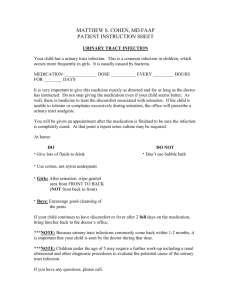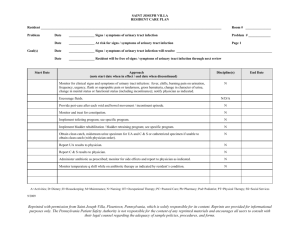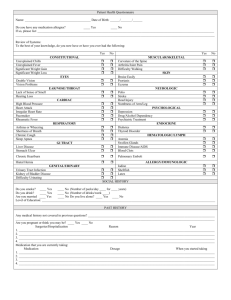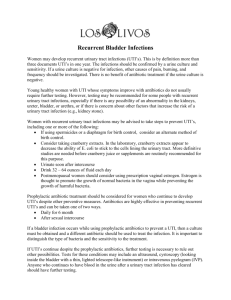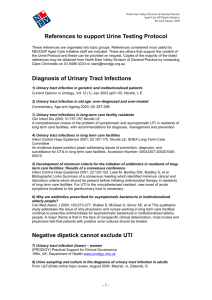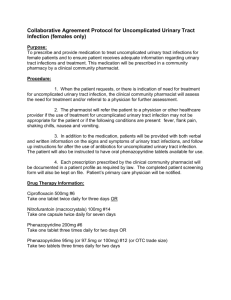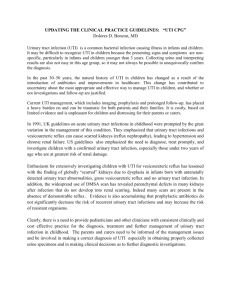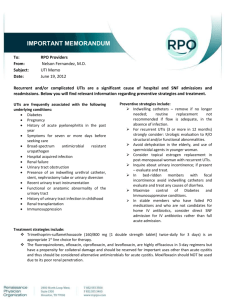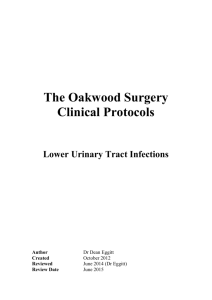Protocol2-Sanford - University of North Dakota School of Medicine
advertisement
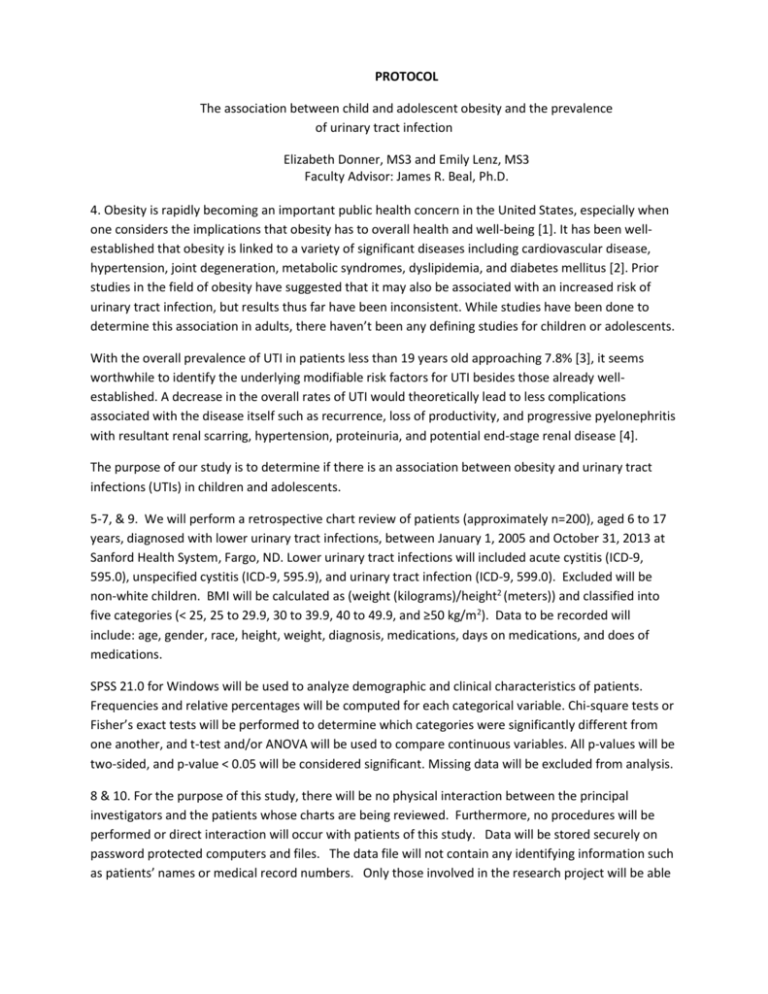
PROTOCOL The association between child and adolescent obesity and the prevalence of urinary tract infection Elizabeth Donner, MS3 and Emily Lenz, MS3 Faculty Advisor: James R. Beal, Ph.D. 4. Obesity is rapidly becoming an important public health concern in the United States, especially when one considers the implications that obesity has to overall health and well-being [1]. It has been wellestablished that obesity is linked to a variety of significant diseases including cardiovascular disease, hypertension, joint degeneration, metabolic syndromes, dyslipidemia, and diabetes mellitus [2]. Prior studies in the field of obesity have suggested that it may also be associated with an increased risk of urinary tract infection, but results thus far have been inconsistent. While studies have been done to determine this association in adults, there haven’t been any defining studies for children or adolescents. With the overall prevalence of UTI in patients less than 19 years old approaching 7.8% [3], it seems worthwhile to identify the underlying modifiable risk factors for UTI besides those already wellestablished. A decrease in the overall rates of UTI would theoretically lead to less complications associated with the disease itself such as recurrence, loss of productivity, and progressive pyelonephritis with resultant renal scarring, hypertension, proteinuria, and potential end-stage renal disease [4]. The purpose of our study is to determine if there is an association between obesity and urinary tract infections (UTIs) in children and adolescents. 5-7, & 9. We will perform a retrospective chart review of patients (approximately n=200), aged 6 to 17 years, diagnosed with lower urinary tract infections, between January 1, 2005 and October 31, 2013 at Sanford Health System, Fargo, ND. Lower urinary tract infections will included acute cystitis (ICD-9, 595.0), unspecified cystitis (ICD-9, 595.9), and urinary tract infection (ICD-9, 599.0). Excluded will be non-white children. BMI will be calculated as (weight (kilograms)/height2 (meters)) and classified into five categories (< 25, 25 to 29.9, 30 to 39.9, 40 to 49.9, and ≥50 kg/m2). Data to be recorded will include: age, gender, race, height, weight, diagnosis, medications, days on medications, and does of medications. SPSS 21.0 for Windows will be used to analyze demographic and clinical characteristics of patients. Frequencies and relative percentages will be computed for each categorical variable. Chi-square tests or Fisher’s exact tests will be performed to determine which categories were significantly different from one another, and t-test and/or ANOVA will be used to compare continuous variables. All p-values will be two-sided, and p-value < 0.05 will be considered significant. Missing data will be excluded from analysis. 8 & 10. For the purpose of this study, there will be no physical interaction between the principal investigators and the patients whose charts are being reviewed. Furthermore, no procedures will be performed or direct interaction will occur with patients of this study. Data will be stored securely on password protected computers and files. The data file will not contain any identifying information such as patients’ names or medical record numbers. Only those involved in the research project will be able to access the data. Data will be stored in the Department of Family and Community Medicine at the UND School of Medicine and Health Sciences for a period of six years after analysis. References: 1. Ogden CL, Carroll MD, Kit BK, Flegal KM. Prevalence of obesity in the United States, 2009-2010. NCHS Data Brief 2012; 82: 1-8. 2. Saliba, W., Barnett-Griness, O., & Rennert, G. (2013). The association between obesity and urinary tract infection. European Journal of Internal Medicine, 24, 127-131. 3. Shaikh, Nader; Morone, Natalia; Bost, James; Farrel, Max. Prevalence of Urinary Tract Infection in Childhood: A Meta-Analysis. The Pediatric Infectious Disease Journal 2008;27: 302–308. 4. Saadeh, Sermin; Mattoo, Tej. Managing urinary tract infections. Pediatric Nephrology 2011;26: 1967-1976.

